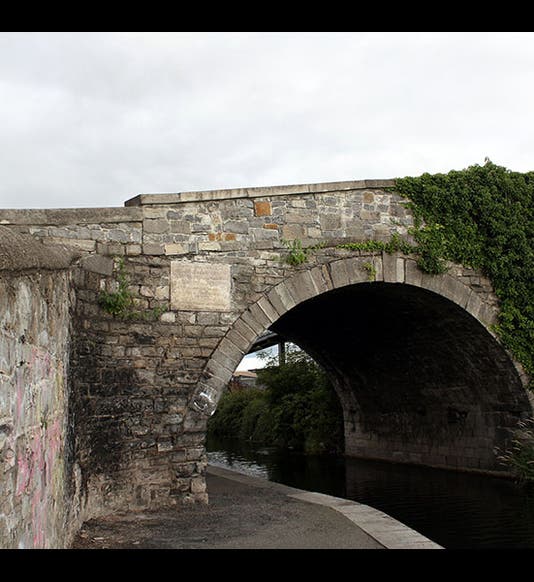Scientist of the Day - William Rowan Hamilton

William Rowan Hamilton, an Irish mathematician, and physicist, was born at midnight, Aug. 3/4, 1805; most biographers have elected to celebrate his birthday on Aug. 4, so we choose Aug. 3. Hamilton is celebrated for having invented a new mathematical tool called a quaternion. A quaternion is basically a quadrinomial (a four-term mathematical expression) of the form w + xi + yj + zk, where i, j, and k are imaginary numbers. Mathematicians already knew about "i", whose square equals minus one, but Hamilton proposed two more imaginary numbers, such that each of them squared equals minus one, yet they are not equal to each other. Quaternions were a boon, in that they allowed one to multiply two four-dimensional vectors together. But of what practical use is all this? Well, in modern computer graphics and gaming programming, quite a lot, since quaternions are what allow one to rotate a point around an axis in three dimensions. No quaternions, no Avatar.
However, for those of us who are not higher mathematicians, the story of how quaternions came to be discovered might be of more interest. Hamilton announced his discovery in three short papers in three issues of the London, Edinburgh, and Dublin Philosophical Magazine in 1844 (all of them in one volume in our Library), and in the last he appended a copy of a letter that he had written the previous year to a friend. In the letter, Hamilton revealed that he had had his quaternion moment the day before, on Oct. 16, 1843. He had been out walking with his wife, and the flash of insight came when they were strolling by the Broom Bridge that crosses the Royal Canal in Dublin. Hamilton says that he immediately carved a quaternion expression into one of the stones of the bridge. This has become a celebrated tale in the history of mathematical discovery, and although the hand-carved inscription can no longer be found, a stone plaque was attached to the bridge many years ago, commemorating Hamilton's discovery, and whenever mathematicians meet in Dublin for a conference or symposium, a trek to the Broom Bridge is always on the agenda.
We see above the bridge, as well as a detail of the attached plaque (first and second images). We also see part of the published letter announcing the circumstances of the discovery (third image). There is only one portrait of Hamilton in the National Portrait Gallery in London, an etching made in 1837, six years before the discovery of quaternions (fourth image).
Dr. William B. Ashworth, Jr., Consultant for the History of Science, Linda Hall Library and Associate Professor, Department of History, University of Missouri-Kansas City. Comments or corrections are welcome; please direct to ashworthw@umkc.edu.









